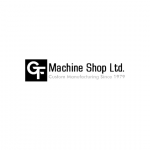Advertisement
Not a member of Pastebin yet?
Sign Up,
it unlocks many cool features!
- Examine metal manufacturing, where creativity and innovation are created from basic materials. From humble beginnings to state-of-the-art inventions, this age-old skill has developed into an exact science that influences entire sectors. The delicate ballet of expert hands and cutting-edge machinery that goes into making metal produces works of art that are unimaginable.
- In this blog post, we'll examine the intriguing history and development of Metal Fabrication Hamilton, Ontario. We'll look into Hamilton, Ontario, and beyond the exact metal-shaping techniques used by artists. We will examine this adaptable skill and learn about its advantages, disadvantages, and applications in various industries.
- The Evolution and History of Metal Fabrication
- When ancient civilizations understood the potential of metal, thousands of years ago, they started making metal. Artists of the Bronze and Iron Ages honed their abilities to sculpt and work with these complex components. In the beginning, metal was cast and hammered.
- Modern technologies and metallurgy revolutionized the production of metals. Throughout the Industrial Revolution, complex metal components were mass-produced by steam-powered machinery. This facilitated modern production and transformed the sector.
- In recent decades, CNC machining has dominated the metal fabrication industry. Humans are unable to achieve the intricate designs and close tolerances made possible by these automated technologies. CNC machining allows fabricators to create customized parts fast and precisely.
- In addition to using bending machines, welding robots, 3D printing, waterjet, plasma, and laser cutting, modern metal fabricators also use these technologies! These developments have created new sectors and enhanced production.
- Every industry, including aircraft, automotive, building, electronics, healthcare equipment, and custom furniture, requires skilled metal fabricators who can blend art and science. With the rapid advancement of technology and market demands, metal manufacturing continues to push boundaries.
- The lengthy history of metalworking demonstrates how inventiveness and perfection have always been human goals. Let's examine the methods used by experts at Machine Shop Hamilton, Ontario, to discover more about this fascinating realm!
- Various Techniques for Metal Fabrication
- Playstation The intricate process of metal fabrication transforms raw metal into completed products. Different goals and advantages are served by different metal production methods and procedures. Let's look at a few well-known ones.
- Cutting is a fundamental metalworking technique. Sawing, shearing, laser cutting, or waterjet cutting can all be used to accomplish this. These technologies guarantee precise cuts and the right size and shape of the metal.
- Forming or bending is another essential metalworking technique. Specialized tools are used to mold the metal into different angles or curves. Roll shaping or press braking are frequently used for this.
- Another crucial step in the metalworking process is welding. To link, two pieces of metal are melted together at extremely high temperatures. Arc, TIG, and MIG welding differ in their precision and strengths. Metal fabrication also uses other processes in addition to these primary ones. These consist of assembling, painting/coating, polishing, grinding, and machining, among other things.
- Pros and drawbacks of metal manufacturing
- Metal fabrication is adaptable and useful in a variety of industries. The ability to precisely draw intricate patterns is quite advantageous. Prototypes and customized parts can be made precisely thanks to metal fabrication.
- Another advantage of manufacturing metal is its durability. Applications requiring robust components profit from the strength and resilience of metals. Metal fabrication is a dependable method for producing equipment parts and building structural elements.
- Production of metals is economical. By streamlining their operations and employing effective techniques, manufacturers can reduce expenses without sacrificing quality. This attracts companies looking for the highest return on investment.
- The manufacture of metal has limitations, much like any other production process. Production time is one restriction. The complexity of the project and the availability of the materials have a major impact on lead times. Because scaling up manufacturing methods can be inefficient, metal fabrication might not be the best option for applications requiring mass production.
- Furthermore, certain metals may only be suitable for specific applications due to limitations in their malleability or corrosion resistance. The advantages of making metal outweigh the drawbacks.
- building,
- Metal fabrication is a versatile and essential process used in many industries. From manufacturing to construction, metal fabrication is crucial to the creation of long-lasting goods and structures. Let's look at a few significant metal fabrication sectors.
- 1. Auto Industry: The production of automobiles depends on metal fabrication. Shaped and assembled are engine parts, exhaust systems, frames, and chassis. Metal fabricators use cutting-edge technology and precise engineering to create automobiles that are safe and effective.
- 2. Aerospace Industry: Accuracy and dependability are essential for every part of an airplane. The process of metal fabrication produces strong, lightweight alloys made of titanium or aluminum for use in turbine engines, landing gears, and airplane bodies.
- 3. Construction Industry: Buildings and bridges are strengthened by metal manufacturing. The list goes on: steel trusses, columns, beams, and staircases! Metal fabricators transform raw materials into functional building, assisting architects in realizing their concepts.
- 4. Energy Sector: Power generation facilities require custom-built equipment made of copper-nickel alloys or stainless steel since these materials resist corrosion. From hydropower turbines to oil refinery pipelines, metal fabrication supports the efficient operation of energy organizations in various industries.
- 5. Sheet-metal casings, power supplies, wire harnesses, and other complex components are fabricated using metal fabrication techniques in the electronics manufacturing industry. Circuit boards, laptops, and computers can all be produced precisely, consistently, and effectively.These are a few effects of metal fabrication on
- For More Info:- https://www.gfmachineshop.com/
Advertisement
Add Comment
Please, Sign In to add comment
Advertisement

